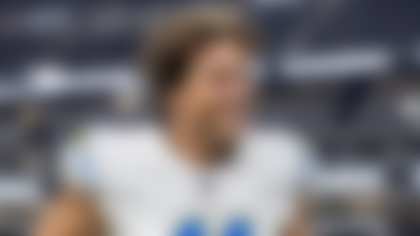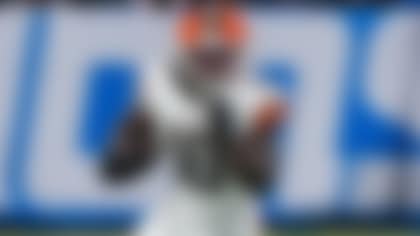Zone read.Speed option. Quarterback sweep.
If you follow college football, you are very familiar with these terms. Such designed quarterback runs are key elements of the spread offense that has become the system of choice for many college teams. These concepts have historically been relatively foreign to the NFL game. But as demonstrated by the success of dynamic running quarterbacks like Cam Newton and Tim Tebow, that might be changing.
Over the past few years, almost every NFL team has incorporated passing elements of the spread offense into the game plan. It's nearly impossible to watch an NFL game today without seeing a wide receiver haul in a bubble screen or tunnel screen. However, the NFL had been slow to fully embrace the element of the spread attack that involves having the quarterback run. Until, that is, the 2011 season. Consider these three pieces of evidence:
Exhibit A:Carolina Panthers rookie Cam Newton set an NFL record for quarterbacks with 14 rushing touchdowns.
Exhibit B: Tim Tebow helped turned the Denver Broncos' season around with his feet, then ran them to a division title.
Exhibit C: The San Francisco 49ers advanced to the NFC Championship Game thanks largely to Alex Smith's key 28-yard touchdown on a quarterback sweep against the New Orleans Saints.
All three quarterbacks benefitted from designed quarterback runs that could be traced back to the spread offense. That's the same offensive system that each quarterback ran to perfection in college. Smith and Tebow both ran the ball very effectively in Urban Meyer's spread attacks at Utah and Florida, respectively. Newton also played under Meyer at Florida, where he backed up Tebow for two years before getting into trouble and transferring to Blinn College. When Newton eventually landed at Auburn, he became a running machine in coordinator Gus Malzahn's spread attack.
The media world has been obsessed with how the New York Jets are going to incorporate Tebow's running ability into their offense. In the meantime, several other NFL teams have already quietly installed their own quarterback running plays during training camp. During the first week of the 2012 NFL preseason, I saw many of these designed quarterback runs in action. Niners backup quarterback Colin Kaepernick's 78-yard touchdown dash, for example, was the result of a perfectly executed zone-read play.
This is a trend that hasn't gone unnoticed around the NFL, according to the coaches and personnel types I talked to. In my opinion, we are going to see a noticeable increase in quarterback carries in 2012, for two significant reasons.
1. The NFL is loaded with mobile quarterbacks
I can't recall a time when this many NFL teams were led by quarterbacks with excellent athletic ability. By my count, at least 18 squads will trot out a quarterback with "plus" athleticism on opening day (see box at right). That number could jump even higher if players like the Tennessee Titans' Jake Locker, the Miami Dolphins' Ryan Tannehill and the Seattle Seahawks' Russell Wilson win starting gigs by the end of training camp.
Several teams even have more than one athletic quarterback. For all the talk about what Tebow can do for the Jets, Mark Sanchez is a top-notch athlete for the position. Then there are duos like Smith and Kaepernick in San Francisco and Andrew Luck and Drew Stanton with the Indianapolis Colts.
Most of these starting quarterbacks put up big rushing numbers in college. Cincinnati Bengals quarterback Andy Dalton, for example, carried the ball 413 times and scored 22 rushing touchdowns at TCU. Tampa Bay Buccaneers quarterback Josh Freeman racked up 14 touchdowns on the ground while rushing 107 times during his junior season at Kansas State. Newton and Tebow, of course, produced prolific rushing statistics in college, as everyone knows.
2. NFL defenses have been forced to get smaller and faster
For years, concerns about safety were the main deterrent when it came to using designed quarterback runs. Nobody wanted to see their franchise passer knocked out of a game while running for a five-yard gain; the risk wasn't worth the reward. That risk, however, might be diminishing, thanks to shrinking NFL defenses.
The exploding passing game has forced NFL defenses to favor speed over size. Two-down, run-plugging linebackers have all but disappeared. Baltimore Ravens All-Pro linebacker Ray Lewis created a media stir by arriving at training camp weighing much less than he has for the bulk of his pro career. Lewis explained that he no longer has to bang heads with Lorenzo Neal-type fullbacks. Instead of taking on blockers and ball carriers the size of freezers, Lewis is being asked to run with fast and athletic tight ends like the New Orleans Saints' Jimmy Graham and the New England Patriots' Rob Gronkowski. St. Louis Rams linebacker James Laurinaitis also slimmed down over the offseason for the same reason.
Cornerbacks and safeties have been getting smaller, as well, a change that can be directly attributed to the proliferation of the spread offense in the college game. Big, physical shutdown cornerbacks don't have much value in college anymore. Offenses that trot out four or five wide receivers every down can easily negate the effect of one great cover cornerback. College coaches no longer want to use that special athlete in the secondary; instead of wasting him there, they'll use him as a receiver, where he can have a bigger impact on the game. As a result, the college ranks are full of cornerbacks who are less than six feet tall.
The box safety is also disappearing. Big, physical run-stuffing safeties can be a liability in coverage, and limit the defensive coordinator's creative possibilities. A quarterback's job is much easier when he's facing a defense that can't easily swap one safety for another. NFL teams have subsequently placed a higher premium on speedy and athletic safeties at the expense of some size and strength.
At the end of the day, I don't think the quarterback position is going to be completely reinvented at the NFL level. It is going to change, though, as teams continue to see the advantage of mixing additional designed quarterback runs into their offensive attacks.
Follow Daniel Jeremiah on Twitter @MoveTheSticks.













